The Entangled Sphere of the Dimasas’ Socio-Cultural Life and Its Implications for Water Governance
The movie Spirited Away (2002), directed by Hayao Miyazaki, presents an interesting storyline on the theme of the spirit-human continuum, thereby presenting components of the Shinto religion. 1 Shinto (the way of the Gods) is the Indigenous faith of the Japanese people and is as old as Japan itself. It is one of the significant religions alongside Buddhism and is also considered one of the largest surviving animistic faiths in the world. 2 In the movie, the protagonist Chihiro and her family enter the world of Kami while exploring an abandoned theme park. Their presence in a place where humans are forbidden disturbs the harmony of the place's environment. Eating the food kept for the spirits thus results in the transformation of her parents into pigs. In the commotion, her accidental encounter with Haku, a river spirit who forgot his identity and name due to anthropogenic activities, leads to the river's disappearance. The eventual development of a personal relationship between Chihiro and the river spirit – along with Chihiro’s adventure to restore her parents into the human form – constitutes the movie's base. The film presents an interesting contemporary picture of the Japanese people's deep-rooted belief in the existence of spirits and their cosmology. Such a belief system amounts to animism, which presents the association of humans and non-humans within the realm of the existing world. A human maintains the harmony of such personal linkages and relationships through elaborate rituals and offerings.
The Dimasas, an Indigenous group in Northeast India, hold a similar ontological understanding of their socio-cultural world, which depicts such complex and intricate relations within the human realm. The Dimasas offer prayers to their clan God and perform ancestral worship in a way similar to Shinto practices whereby the Kami are worshipped. Kami can be understood as sacred spirits who are worshipped through various rites, rituals and festivals. Thus in the worldview of Shinto there is a continuity between humans and nature in a way that is similar to how in Dimasa cosmology we as humans co-exist with non-humans and supernatural beings in the same world. Both systems tell us that this way harmony is maintained.
If there is any disturbance, a bad omen might befall the community. T. B. Subba, a prominent anthropologist of India, points out how contemporary Indigenous people from Northeast India still hold personal relationships with deities, rivers, and mountains. 3 This connectedness of people with their physical environment is a vital source of cultural and individual identity. 4 Any attachment to a place is a powerful emotional bond between people and their physical surroundings.
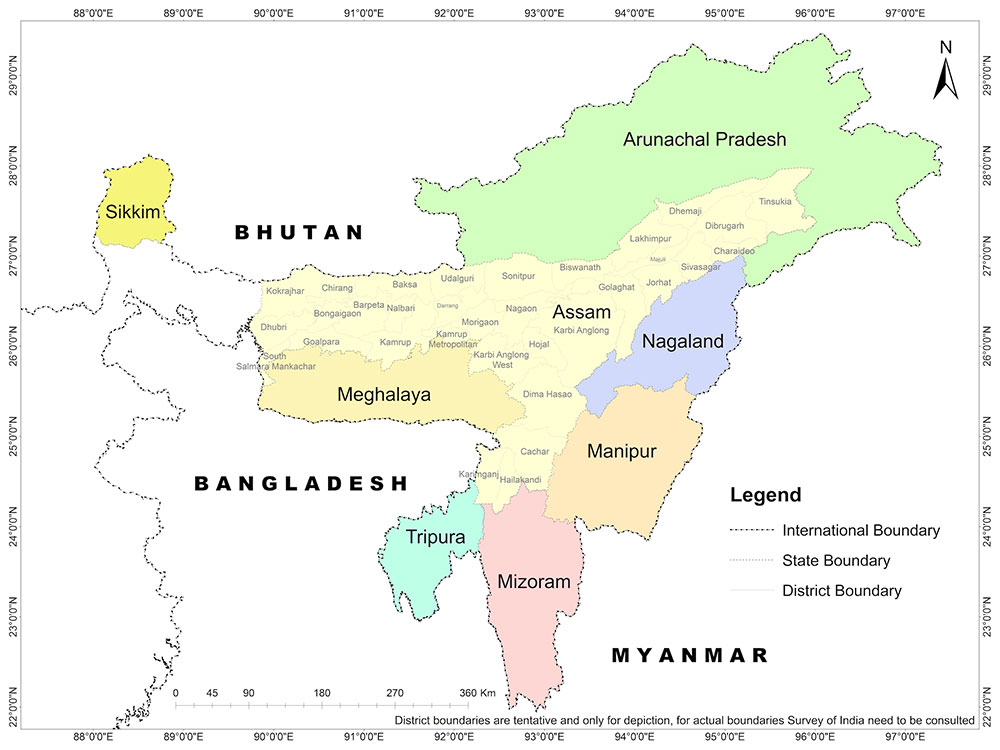
Fig. 1: The map shows the states of Northeast India along with the neighbouring countries. (Map prepared by Avantika Lawal, 2019)
In this article, I bring forth the case of the Dimasas who associate themselves with animistic religious life that has some amalgamation with pan-India Hindu elements, and deep-rooted attachments to certain ritualised spaces. In addition to the diffusion of various Hindu rituals in their socio-cultural milieu, other elements need further exploration, such as the intricate relationship of the Dimasas with their surrounding water bodies. The importance of waterbodies in their socio-cultural life informs the Dimasas’ Indigenous water governance systems. In particular, the world of spirits is an essential aspect of their worldview and cannot be overlooked if one wants to explore the intricate personal relationships Dimasas have with their surroundings. This article explores and discusses the belief system of the concerned community, as the world of spirits is an indispensable part of the traditional belief system of any Indigenous population of Northeast India.
Data collected from two sites – Doyapur and Khernaidisa in Nagaland and Assam respectively – are primarily highlighted. The most prominent aspect of these two field sites is that they are located beside the river Dhansiri on opposite sides. The Dimasas of Northeast India are also known as Kachari.
The intertwined world of the spirits: Dimasas’ way of life
Dimasas have a commonly narrated belief which traces their origin to a mystical bird, Arikhidima. This belief states that the Dimasas are the progeny of the union between Arikhidima and Bangla Raja, the God of earthquakes. The union resulted in Arikhidima laying seven eggs at the confluence of two rivers. Six eggs hatched without any effort. From them came the six Dimasa Gods: Shibarai, Alu Raja, Naikhu Raja, Waa Raja, Gunyung-Braiyung, and Hamiadao, all of whom were believed to be benevolent Gods. Among them, Shibarai is the eldest and most significant local deity, believed to be present in all Daikhos – places reserved for a higher omnipresence being in sacred forest areas. Daikhos are regarded as abodes of deities where periodic rituals are conducted to appease the concerned deities.
The remaining last egg took time to hatch, and external force had to be applied. When it finally hatched, malevolent spirits emerged. Dimasas consider the benevolent Gods as their ancestral and local deities. 5 Both benevolent and malevolent deities are part of the Dimasa cosmologies, and they seek protection and wellbeing by making offerings to them. Some local deities are associated with Hindu deities like Lord Shiva and Goddess Kali. However such associations with established religion have not weakened the strong hold of traditional beliefs among the Dimasas.
Dimasas believe that their surroundings – forests (hagra), hills, and streams – host both malicious and benevolent spirits. 6 Therefore, a ritual must be performed before any expedition (e.g., entering a forest, fishing, clearing a forest, etc.). This mandatory ritual involves giving a sacrificial animal to seek permission from the spirits to carry out an action without causing any disturbance to the residing spirits. In addition, this is a way to seek blessings and protection. The existence of spirits and living beings in the same realm is a commonly held belief system among most of the Indigenous communities in Northeast India. Karbi, a neighbouring community of the Dimasas, also offer prayers to their local deities and seek permission to collect parts of the medicinal plants from the groves by offering betel leaf (Piper betle) and areca nut (Areca catechu).
In most forest-related rituals, a small fowl must be sacrificed to appease the forest's deities and spirits. Dimasas believe that different kinds of spirits reside in the forest. Some may cause you to get lost by calling your name, while some malicious spirits may create a false illusion of being prey in hunting expeditions.
Apart from forests, rivers and streams are also believed to be inhabited by various spirits. Among them, Dakinsa is a prominent one. A Dakinsa is believed to be a spirit with no anthropogenic features but rather a ball of fire who floats in the air. One evening while strolling around the dusty lane of Doyapur village in Nagaland, one of the field assistants narrated the story of him being attacked by Dakinsa which he believed to be the result of him being responsible for polluting the residing space of the spirit near his house. It resulted in him being sick for days. His parents had to perform a small sacrificial ritual to the spirit seeking acceptance of their apologies.
Disturbance to the spirit might bring a bad omen to the concerned individual. The field assistant stated that Dakinsa resides in a clean stream, and any defilement in the area might drive the spirit away. Therefore, the stream water should not be blocked; it should be free-flowing, since stagnant water leads to pollution of the stream. So utmost care is taken to ensure the free flowing of rivers and streams. The spirits and more-than-human existence are a reality in the day-to-day affairs of the communities in Northeast India. The reciprocal relationship of responsibility that the Indigenous communities maintain around water bodies in need of protection indeed helps to maintain ecological balance. 7
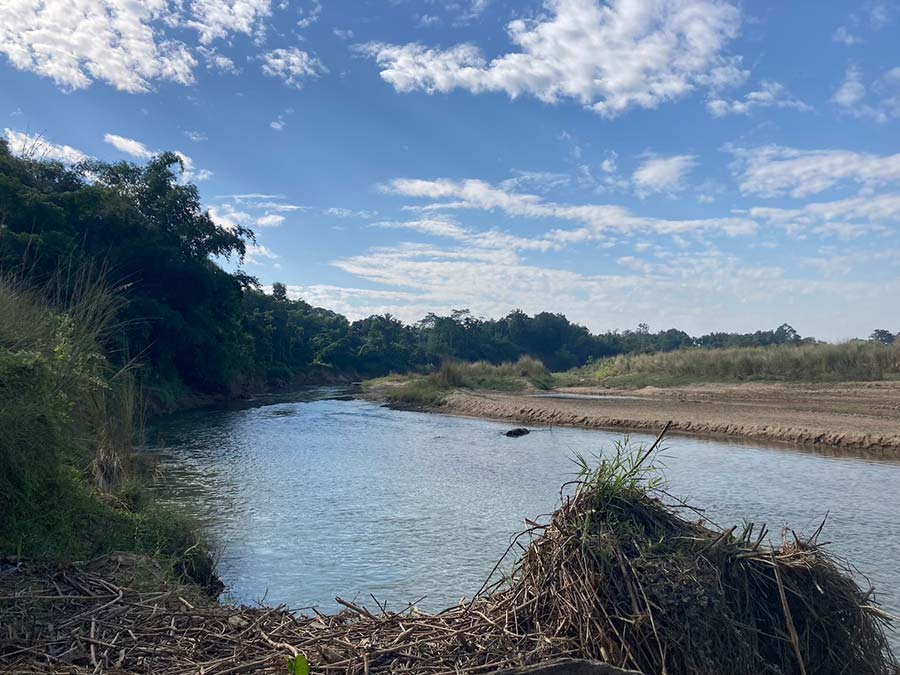
Fig. 2: The river Dhansiri forms the natural boundary between Assam and Nagaland (near the Dhansiripar subdivision). On the left is Nagaland and on the right is Assam. (Photo by the author, 2022).
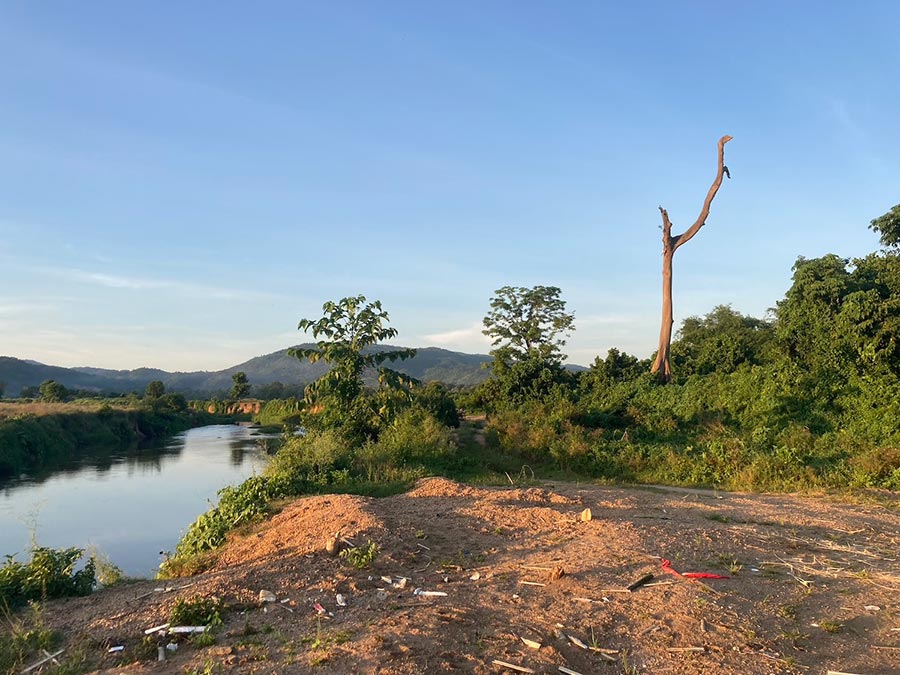
Fig. 3: A small stream (left) and the Damadi Daikho (right) located next to each other in Karbi Anglong district of Assam. (Photo by the author, 2022)
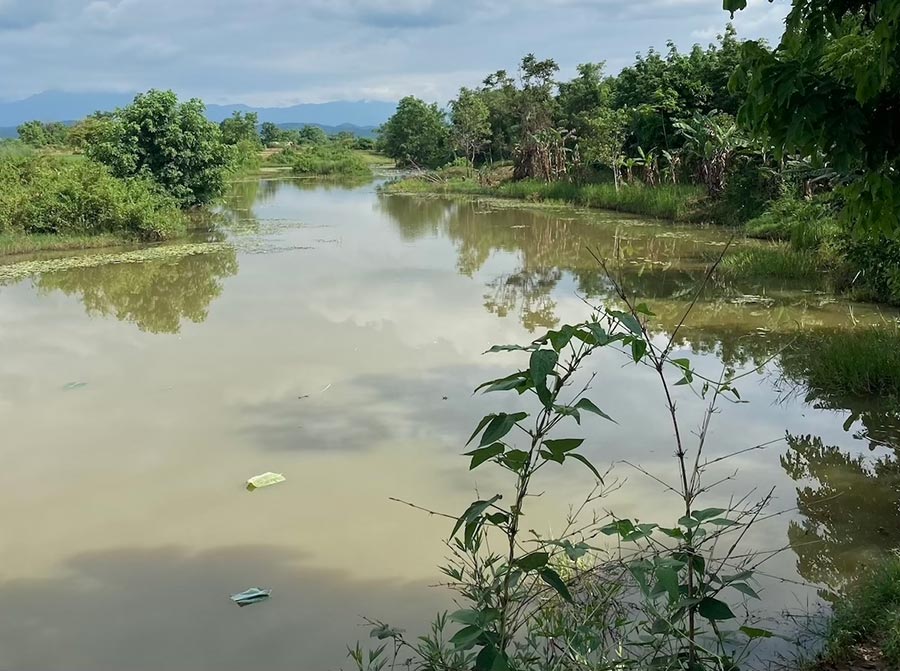
Fig. 4: Privately owned pond surrounded by agricultural fields in Doyapur, Chümoukedima district, Nagaland. (Photo by the author, 2022)
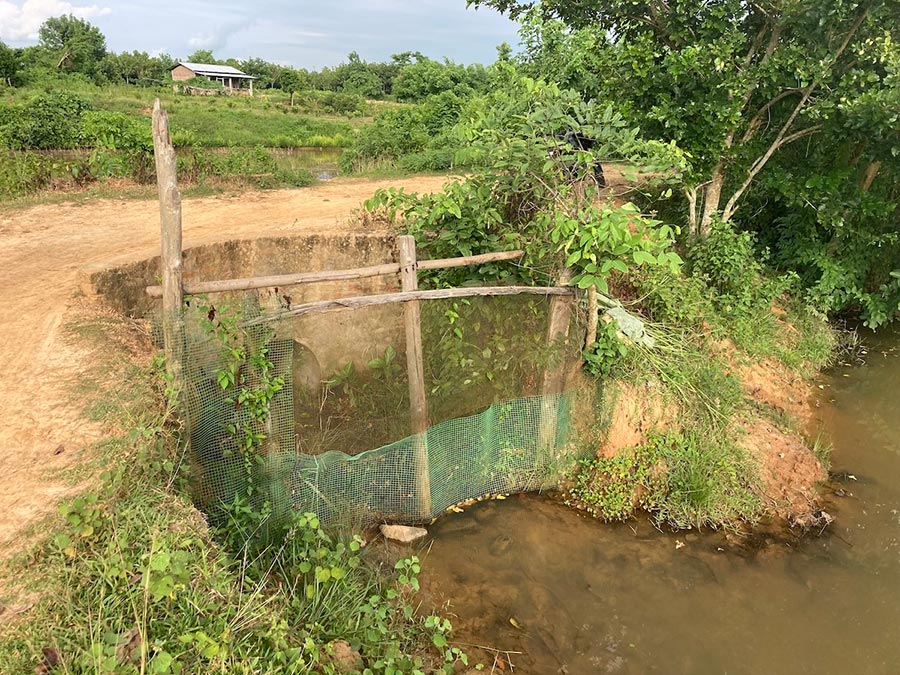
Fig. 5: A well-structured drainage channel is constructed through which excess water flows out of the pond. Doyapur, Chümoukedima district, Nagaland. (Photo by the author, 2022)

Fig. 6: A network of water channels connects different ponds in Doyapur, Chümoukedima district, Nagaland. (Photo courtesy of Maison Jeedung, 2022)
The significance of water bodies
Water plays a significant role in the socio-cultural life of the Dimasa. Consequently, water bodies make up large portions of the territories Dimasas inhabit. A prominent feature of any Dimasa village is that it is situated beside a river or other waterbody. In this case, Semkhor village in the Dima Hasao district of Assam is an exception as it is located in a remote area away from any river or stream. One of the community members we spoke to stated that there are three things Dimasas cannot live without – the river, banana, and bamboo. These three things are extremely crucial in Dimasa social life. The banana and bamboos are used in all the Dimasa rituals and villages are named after bamboos. Most of the communal rituals are performed beside a river or waterbody. In addition to that, the etymology of the term Dimasa reflects the close association with the river or any waterbody. A small stream or waterbody is one of the prominent characteristics observed across different sites of Daikho (Figure 3). In local terminology, the term ‘Dimasa’ translates to ‘descendants of a big river’ or ‘children of great water’ meaning specifically the Brahmaputra. 8 The Dimasa term for water (‘di’) is prefixed in most of the rivers found in Assam: Dikhou, Dibru, Dirang, and Dihing, which signifies that the Dimasa might have settled beside the banks of these rivers.
In addition, the Dimasas’ belief associates life and death as cyclic phenomena. They believe that after death, the soul leaves the physical body of the deceased and goes to the dembra, the place of the dead, and these souls return to the living world by taking rebirth. A river separates the living world and the dead world. The funeral rites are elaborate and extensive, and they are seen as crucial to ensure that the deceased’s soul successfully moves from the living world into the world of the dead. This journey and incorporation comprise various rites and rituals, such as placing coins on the body. This is symbolic, as they believe that the soul will use these coins to cross the river and reach the other world. A small makeshift house is placed near the dead body for the soul to rest.
Furthermore, when the people carry the dead body from the house to the cremation ground – which is usually situated beside a river – a woman is assigned to throw rice or pieces of thread from the deceased house to the cremation ground. This particular rite ensures the direction of the soul and the route to the other world. It is meant to guide the way for rebirth into the same family or clan. These rites and rituals are communal, as they involve the village, neighbours, and kin groups. Therefore, patri-clan and matri-clan members of the dead actively participate in death rituals in addition to the assigned priest and his helpers.
The etymology of the term ‘Dimasa,’ the story of their inception, and their cyclical conception of life all resonate with the importance of water bodies in the Dimasa socio-cultural life. The association with water bodies is so significant in Dimasas’ cosmology that the names of many villages have local derivations of a small stream or they are named after other water bodies. Some such villages are Disagufu (a small white stream), Khernaidisa (pond and stream), Disagisim (a small black stream), Maderdisa (a small stream with Mader trees).
The case of khernai
In the local Dimasa terminology, khernai means pond or lake. Apart from residing beside a river bank, Dimasas make ponds for various purposes: rearing fish, harvesting rainwater and drinking water, and irrigation. In fact, local historians have negated the assumption of wet-rice cultivation being introduced by Aryan settlers in the valley. Bathari argues that Dimasas were all acquainted with this form of cultivation due to the presence of an Indigenous irrigation system. 9
A khernai is a prominent feature of most Dimasa villages. It is not an isolated ecosystem but is connected to other ponds in the village and sometimes even to ponds across agricultural fields – which in turn also are connected with each other through channels. This forms a well-structured system of drainage where water is stored and managed for various purposes. The water of the khernai eventually flows into the adjacent river.
Khernai is a traditional way of water management which is similar to the dong traditional water management system that can be found throughout Assam whereby the river water is brought into local villages through connected channels. The khernai have been prevalent in the Dimapur area, once the capital of the Dimasa Kingdom, for centuries. Many rectangular-shaped ponds were dug during the reigns of the Dimasa kings. However, the number of khernai have been greatly diminishing even though they can still be found in the rural areas of Assam and Nagaland. In big towns they have made way for runaway economic development and infrastructure projects. The blocking of the free flow of waterways was also pointed out to us by a community member as a reason for the collapse of the traditional irrigation method.
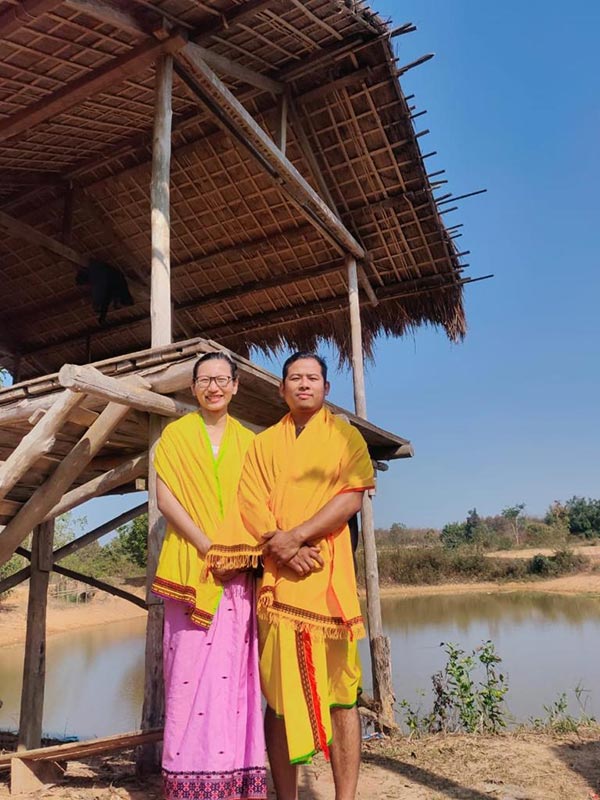
Fig. 7: The author with her husband during a ceremony in Doyapur to incorporate her into the Dimasa community. Part of the ritual took place in a khernai traditional pond which can be seen in the back. (Photo courtesy of Mailodi Jigdung, 2022)
Conclusion
Dimasas' topographical understanding of the world is not homogenous. Instead, it is heterogenous, where a distinction is maintained between sacred and profane. The Dimasa worldview encompasses all animate and inanimate, along with the spirits, into their everyday life. Moreover, the complex interrelationship of space and the environment results in marking space as sacred. The institution of Daikhos is one such sacred space. Daikhos are territorial units that are considered sacred, and which are protected from defilement by any 'foreign' intrusion, usually portrayed as something that might defile the sacred. The sacred space of the Daikho is kept separated from mundane space.
Furthermore, such manifestation is not confined to the space of Daikho. Rather, this sense of sacredness filters through into other elements of Dimasa life, such as rivers, lakes, and trees, to name a few. Rivers have been acknowledged as sacred places in the traditional cosmology of the wider Northeast region of India and also across other cultures. 10 In particular, the presence of the river's guardian spirit Dakinsa encourages people to protect the local ecosystem, thereby putting in place prohibitions to any obstructions to the free-flowing river.
On a final note, the river Dhansiri which has a continuous flow of surface water throughout the year, is facing crises due to its increased level of pollution in the major catchment area. The Nagaland Pollution Control Board (NPCB) has put forward the idea of the restoration of lakes and making artificial lakes to manage the natural flow of the river Dhansiri thereby reducing the pollution of the river and groundwater of the district. 11 This recommendation is remarkably similar to the traditional irrigation method employed by the Dimasas and their holistic underpinnings of local water governance based on their traditional belief systems. An interesting acknowledgment that traditional approaches to understanding water bodies can help us tackle current water crises in the contemporary world.
Prithibi Pratibha Gogoi is an independent researcher from Northeast India. Her doctoral thesis tried to comprehend the Daikho tradition prevalent among the Dimasa which bears an imminent resemblance to the practice of sacred forests. A section of the research was published in Sacred Forests of Asia: Spiritual Ecology and the Politics of Nature Conservation in 2022. 12